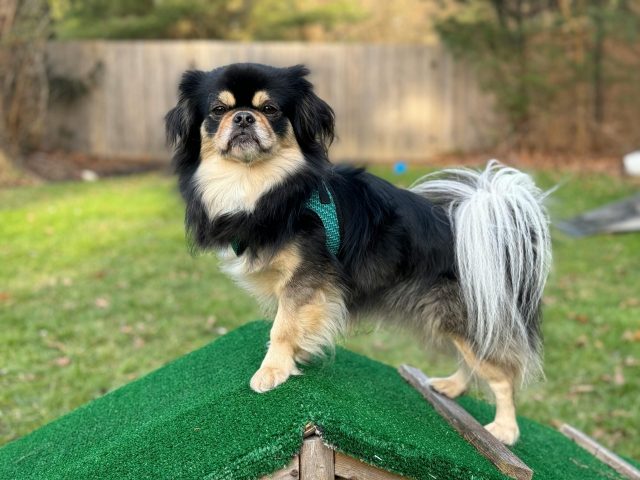Our homes are meant to be safe havens for us and our pets, but several hidden dangers can cause significant anxiety and fear in our dogs. As pet owners, we must know these potential threats to create a more comfortable and secure environment for our furry friends. From common household items to everyday occurrences, understanding these hidden dangers can help you take steps to mitigate their impact. This article explores ten hidden dangers in your home that might terrify your dog. Recognizing these sources of fear can make your home safer and more inviting for your dog, ensuring their well-being and happiness.

1. Loud Appliances
Household appliances such as vacuum cleaners, blenders, and hairdryers can produce loud, jarring noises that frighten dogs. The sudden and intense sound can be overwhelming, causing your dog to hide or become anxious. To help your dog cope, try to desensitize them gradually by exposing them to the noise at a low volume and rewarding calm behavior. Alternatively, create a safe and quiet space for your dog to retreat to when these appliances are in use.
2. Chemical Cleaners
The strong scents and fumes from household cleaners can be distressing and harmful to dogs. Many cleaning products contain toxic chemicals if ingested or inhaled. Dogs have a heightened sense of smell, and the pungent odors can cause discomfort or respiratory issues. Opt for pet-safe cleaning products and ensure that areas where chemicals are used are well-ventilated. Always store cleaners out of your dog’s reach to prevent accidental ingestion.
3. Slippery Floors
Hardwood, tile, and laminate floors can be slippery, making it difficult for dogs to walk without slipping. This can be particularly stressful for older dogs or those with mobility issues. Slips and falls can lead to injuries and a fear of walking on these surfaces. Use non-slip mats or rugs in high-traffic areas and trim your dog’s nails for better traction. Providing a stable surface can help your dog confidently move around the house.
4. Electrical Cords
Dangling electrical cords can be both a physical hazard and a source of anxiety for dogs. Curious dogs might chew on cords, risking electric shock or entanglement. The presence of cords can also create obstacles that cause trips and falls. To protect your dog, use cord organizers or covers to keep them out of reach and secure cords against walls or behind furniture. Regularly inspect cords for signs of wear and replace damaged ones immediately.
5. Small, Swallowed Objects
Small household items such as buttons, coins, and children’s toys can pose a choking hazard or cause intestinal blockages if swallowed by dogs. These objects can be particularly tempting for puppies and curious dogs who explore with their mouths. Keep small items out of your dog’s reach and ensure that toys are appropriately sized and durable. Regularly check your dog’s toys for wear and tear and replace them as needed to prevent accidental ingestion.
6. Open Trash Bins
Open trash bins are a potential danger zone for dogs, who might be tempted to rummage through the contents. Trash often contains items that are harmful or toxic to dogs, such as spoiled food, sharp objects, and household chemicals. Consuming trash can lead to gastrointestinal issues, poisoning, or injuries. Use trash bins with secure lids and store them in cabinets or areas that are inaccessible to your dog. Training your dog to avoid the trash bin can also help prevent this behavior.
7. Unsecured Windows and Balconies
Unsecured windows and balconies can pose a significant risk to dogs, especially those that are curious or prone to chasing after things. Dogs can accidentally fall out of windows or off balconies, resulting in serious injuries or worse. Ensure that windows are securely closed or fitted with sturdy screens, and never leave your dog unattended on a balcony. Installing safety gates or barriers can provide an additional layer of protection.
8. Household Plants
Many common household plants are toxic to dogs if ingested. Plants such as lilies, poinsettias, and philodendrons can cause various symptoms, from mild irritation to severe poisoning. Dogs might chew on plants out of curiosity or boredom, unaware of the potential danger. Familiarize yourself with safe dog plants and remove or relocate toxic plants out of their reach. Providing safe chew toys and interactive activities can also help deter your dog from chewing on plants.
9. Pesticides and Rodenticides
Pesticides and rodenticides used to control pests can be extremely toxic to dogs. These chemicals can be ingested directly or indirectly by consuming a poisoned rodent. Symptoms of poisoning include vomiting, diarrhea, seizures, and even death. Store these substances securely and use pet-safe alternatives whenever possible. If you suspect your dog has been exposed to a pesticide or rodenticide, seek veterinary care immediately.
10. Human Medications
Human medications, whether prescription or over-the-counter, can be dangerous or fatal to dogs if ingested. Common medications such as pain relievers, antidepressants, and vitamins can cause severe reactions in dogs. Always store medications in secure containers outside your dog’s reach. Never administer human medication to your dog without consulting a veterinarian. If your dog accidentally ingests medication, immediately contact your vet or an emergency animal clinic.

By identifying and addressing these hidden dangers in your home, you can create a safer and more comfortable environment for your dog. Loud appliances, chemical cleaners, slippery floors, and electrical cords are potential hazards that can cause fear and anxiety in your pet. Being proactive and making necessary adjustments will help ensure your dog’s well-being and reduce their stress. The bond between you and your dog is built on trust and care, and taking steps to eliminate these hidden dangers will contribute to a happier, healthier life for your furry companion.
 Toledo, United States.
Toledo, United States.